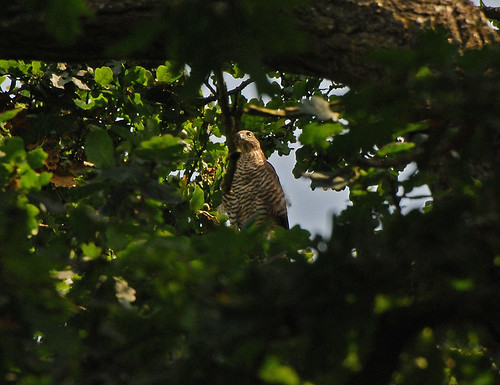Wicken Fen is the largest remaining area of true fen in England and has survived because it has been conserved by encasing it in what is effectively a gigantic plastic bag. The earth on the Fen is waterlogged and if the bag weren’t there the water would simply drain away leaving very rich agricultural soils but none of the wildlife associated with fenland habitats. Another result of the water retention is that the Fen is 6-8 feet above the surrounding farmland and the earth literally shakes if you jump hard on the ground as it’s like a saturated sponge.
Because of the water the predominant habitats are reedbeds and waterways which is reflected in the wildlife. The Fen is so rich in wildlife that a hike around there is like a mini safari! I was there on a hot and sunny Sunday morning in June and wildlife of all sorts abounded. In particular the insects were very busy. This dragonfly had recently emerged from the larval stage as an adult and was sitting in the grass drying out before taking to the air.

Black tailed skimmer youngster preparing for it’s first flights
The young skimmer was on the edge of a path which ran alongside one of the lodes (man made water courses) and on the water opposite the skimmer were lily pads and sitting on one of them was a damselfly, warming itself up in the morning sunshine.

Red eyed damselfly (Erythromma najas) in beautiful repose on a lily pad, surrounded by reflections of the clouds
And of course, that time of year is the season for lurv for many creatures, including this pair of variable damseflies (Coenagrion pulchellum) which are in the process of mating. The male is the blue one and he is clasping the female by gripping the back of her head – the pronotum – whilst she has pressed her genitalia against his abdomen to receive the sperm.
As well the inscect diversity the unique habitat of the Fen is home to lots of beautiful plants and flowers, including this common spotted orchid. This orchid is indeed common and can be found in fens, marshes and other wetlands all over England, but is rare in Scotland. Common, or not, I think all orchids are spectacular flowers and it was really good to see them in such numbers on the Fen.
 Common spotted orchid – Dactylorhiza fuchsi
Common spotted orchid – Dactylorhiza fuchsi
Whilst I was busying myself trying to get photogrpahs of the dragons and orchids a kestrel (Falco tinnunculus, Dansk: tårnfalk) was busy overhead. But even better than that a hobby (Falco subbuteo, Dansk: lærkefalk) was on the hunt for dragonflies and small birds.
The hobby is a small falcon which can be seen in these parts in the summer and hunts low over farmland and reedbeds at phenomenal speed. It’s one of very few predators that can hunt swallows and swifts in flight. This one was doing exactly that and in the distance, a few hundred metres away were at least another two. So I guess it was a family and the chicks had recently fledged and the adults were showing them the ropes. So I whiled away a good half an hour watching their breathtaking aerobatic exploits!

Brimstone butterfly sipping nectar from a thistle flower
I did volutary work at Wicken for 3 years or so back around the turn of the Millenium. It was incredibly rewarding and a good opportunity for a lab-based sedentary person such as myself to get outside and do some donkey work under the sky. One of the projects I worked on back then was scrub clearance to create an area suitable for butterflies to breed. I went and had a look at it on this walk for the first time since I helped to create it and it was very different. The scrub we cleared had been replaced by less scrubby, more proper woodland, trees, and there was small open glades with grasses and wild flowers. Whilst I was in there I flushed a leveret, which is about the closest I’ve ever been to a wild hare, it had been sitting tight but made a run for it when I got just a tad too close – about 5m!
So I didn’t manage a picture of the hare but I did manage a shot of the brimstone butterfly above (Gonepteryx rhamni), which I thought was absolutely lovely, sitting on the purple flower and framed by the two grass stems. It was terribly obliging and let me move all round it to get the best angle for a portrait. So this is about the best shot and one I’m very pleased with. I hope you like it too!


























































